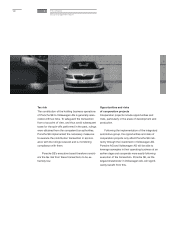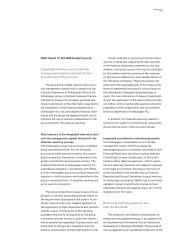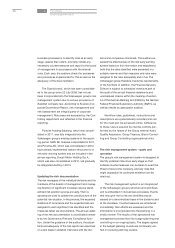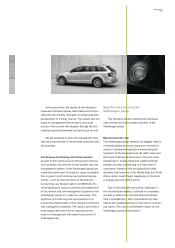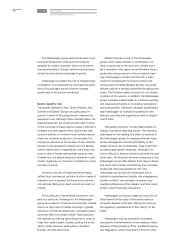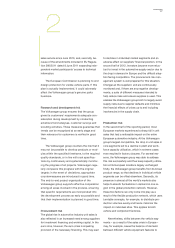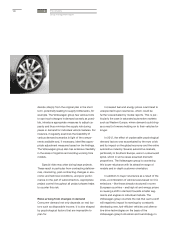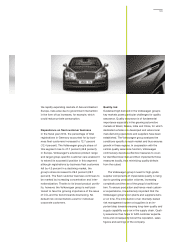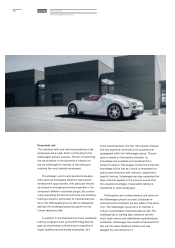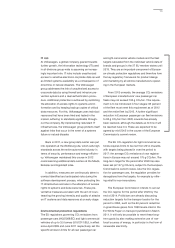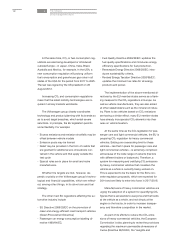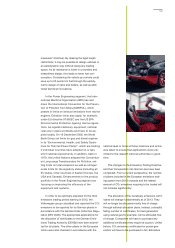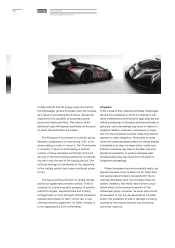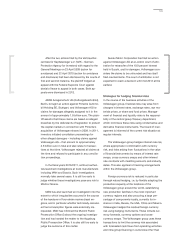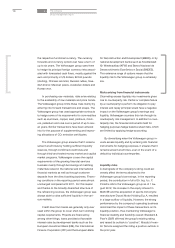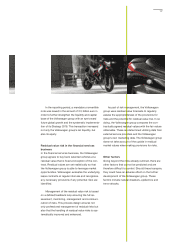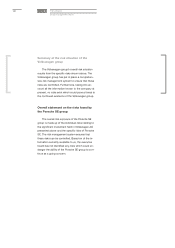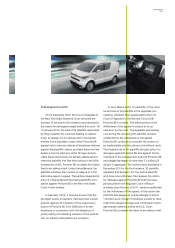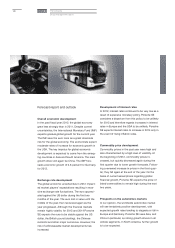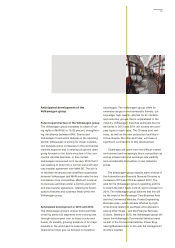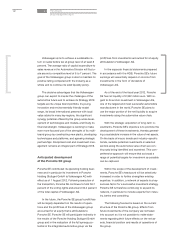Porsche 2012 Annual Report Download - page 136
Download and view the complete annual report
Please find page 136 of the 2012 Porsche annual report below. You can navigate through the pages in the report by either clicking on the pages listed below, or by using the keyword search tool below to find specific information within the annual report.
At the same time, CO2 or fuel consumption reg-
ulations are also being developed or introduced
outside Europe – in Japan, China, India, Brazil,
Australia and Mexico, for example. In the USA, a
new consumption regulation will prolong uniform
fuel consumption and greenhouse gas rules in all
states of the USA for the period from 2017 to 2025.
The law was signed by the US president on 28
August 2012.
Increasing CO2 and consumption regulations
mean that the latest mobility technologies are re-
quired in all key markets worldwide.
The Volkswagen group closely coordinates
technology and product planning with its brands so
as to avoid target breaches, which entail severe
sanctions. In principle, the EU legislation permits
some flexibility. For example:
· Excess emissions and emission shortfalls may be
offset between vehicle models
· Emission pools may be formed
· Relief may be provided in the form of credits that
are granted for additional eco-innovations con-
tained in the vehicle and that apply outside the
test cycle
· Special rules are in place for small and niche
manufacturers.
Whether the targets are met, however, de-
pends crucially on the Volkswagen group’s techno-
logical and financial capabilities, which are reflect-
ed, among other things, in its drive train and fuel
strategy.
The other main EU regulations affecting the au-
tomotive industry include
· EU Directive 2009/33/EC on the promotion of
clean and energy-efficient road transport vehicles
(Green Procurement Directive)
· Passenger car energy consumption labeling di-
rective 1999/94/EC,
· Fuel Quality Directive 2009/30/EC: updates the
fuel quality specifications and introduces energy
efficiency specifications for fuel production,
· Renewable Energy Directive 2009/28/EC: intro-
duces sustainability criteria,
· Revised Energy Taxation Directive 2003/96/EC:
updates the minimum tax rates for all energy
products and power.
The implementation of the above-mentioned di-
rectives by the EU member states serves as a flank-
ing measure for the CO2 regulations in Europe. As
well as vehicle manufacturers, they are also aimed
at other stakeholders such as the mineral oil indus-
try. Plans to tax vehicles based on CO2 emissions
are having a similar effect; many EU member states
have already incorporated CO2 elements into their
rules on vehicle taxation.
At the same time as the CO2 legislation for pas-
senger cars and light commercial vehicles, the EU is
preparing CO2 regulation for heavy commercial
vehicles. Setting one overarching limit for these
vehicles – like that in place for passenger cars and
light commercial vehicles – is extremely complicat-
ed because of the wide range of variants (tractors
with different trailers or bodywork). Therefore, a
system for measuring and certifying CO2 emissions
by heavy commercial vehicles that considers the
vehicle as a whole is currently being worked on.
This is expected to be the basis for the EU’s con-
crete regulatory proposals, which are expected for
2014 and are likely to enter into force in 2017/2018.
Manufacturers of heavy commercial vehicles are
urging the adoption of a system for quantifying CO2
figures that is accessible to everyone and that looks
at the vehicle as a whole, and not simply at the
engine or the tractor, in order to increase transpar-
ency and therefore competition in the market.
As part of its efforts to reduce the CO2 emis-
sions of heavy commercial vehicles, the European
Commission is also planning to revise the provisions
regarding the maximum permissible dimensions of
trucks (Directive 96/53/EC, the “weights and
2The company
Group management report
2132


